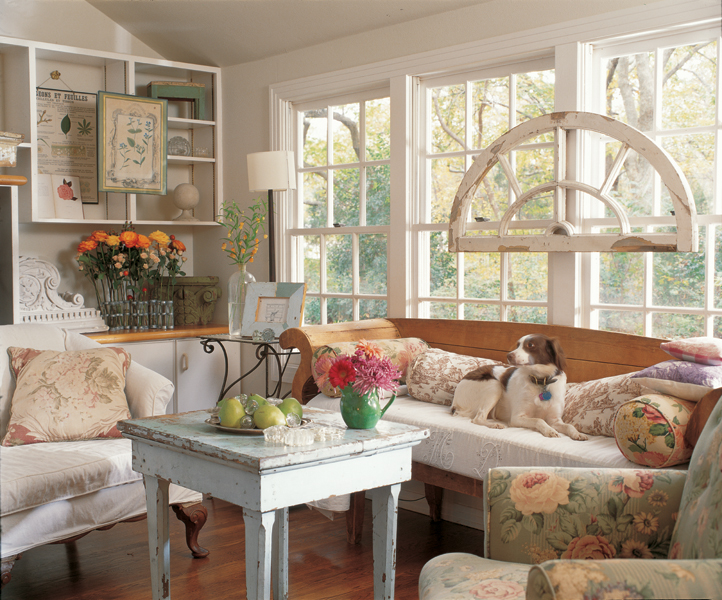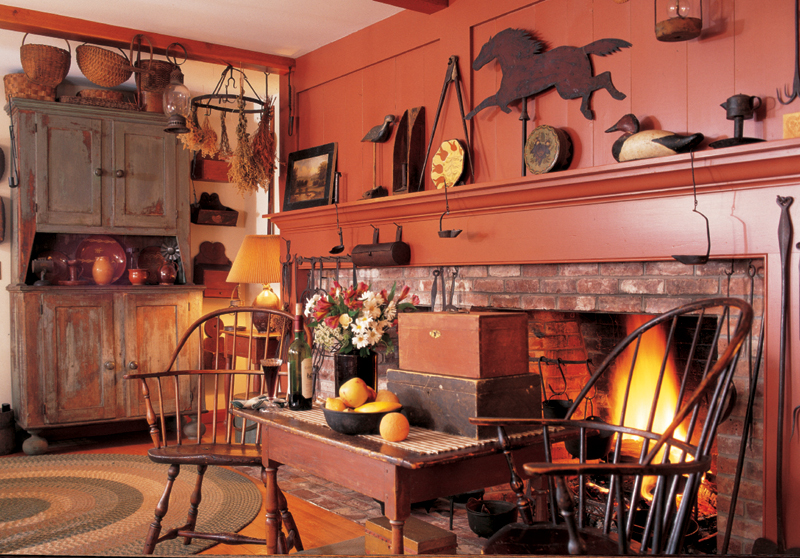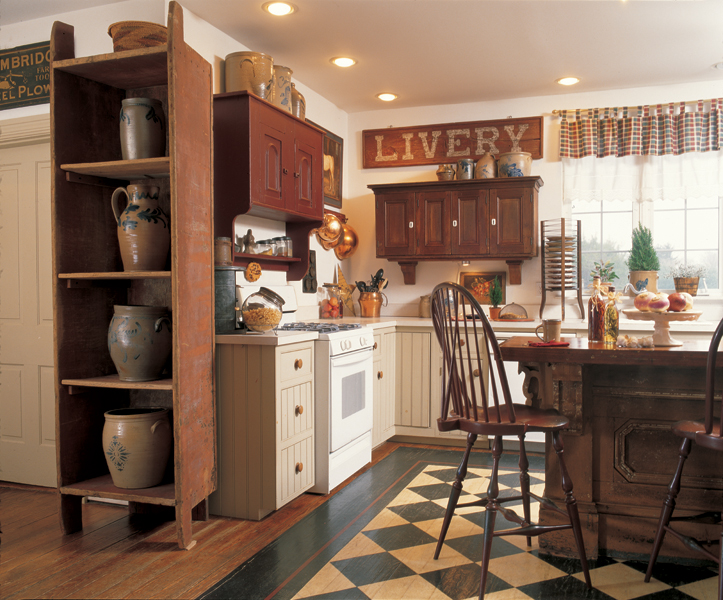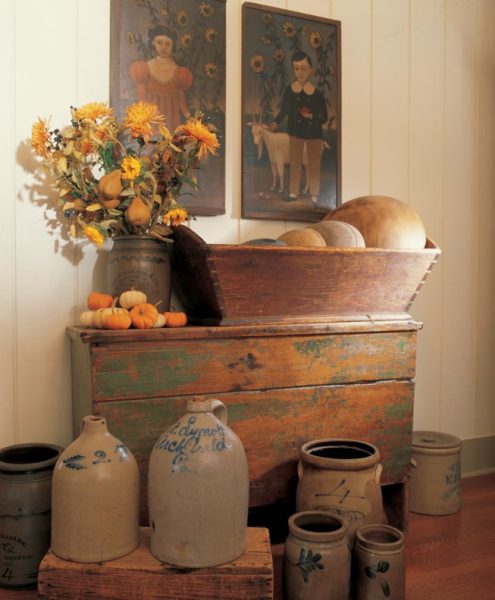
The two newly created primitive portraits accompany rustic crockery in a Virginia farmhouse dining room
Living as they do in a farmhouse in rural Virginia, surrounded by antiques and collected folk art, Esther and Franklin Schmidt are drawn to the rustic. “Primitive, imperfect, sensual, historic” is how they refer to the artifacts of households past. These are honest and unpretentious objects, made by untrained artisans, mostly for utilitarian purposes. Yet “they evoke immediate and emotional reactions,” say the Schmidts. In our modern-day context, these objects have not only the patina of age but also a sculptural presence.
The Schmidts are a well-traveled writing and photography team of two. Their most recent book is Passion for Primitives (Schiffer, 2011), a photo-driven look at displaying objects of folk art and using them in interior design. As they spoke to homeowners, collectors, and dealers, they asked them to describe the difference between “country” and “primitive.” They say the best answer they got was that, while primitive pieces are indeed country, “country” objects and country decorating are not necessarily primitive. “Country pieces can be manufactured, whereas primitives are one-of-a-kind and handmade,” they say. The difference is critical: Primitive is not a style.
Since the Colonial Revival of the early 20th century, primitives have been popular collectibles. They’ve long been sought by old-house restorers. What’s new today is the use of antique and rustic objects in modern settings. Their simplicity of form is seen to complement clean-lined furniture, from rectilinear American Arts & Crafts pieces to mid-century modern and beyond.
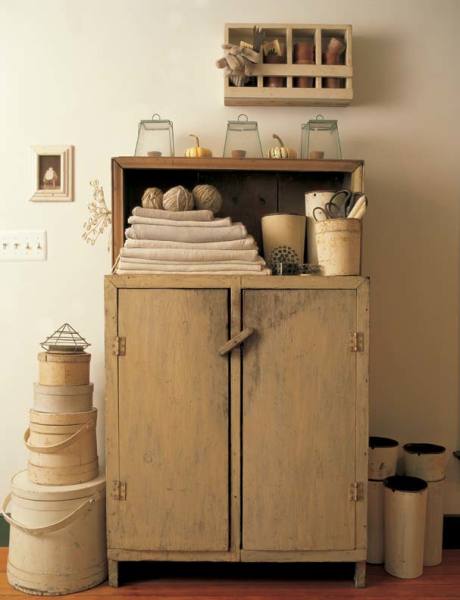
Simple objects create a monochromatic statement.
Idea #1: Primitives as Art
Whether they live in an old house or a new one, most collectors enjoy each primitive or rustic object for its intrinsic value. The collection is evocative. Objects are treated as folk art: grouped for display or arranged in a pleasing “art corner.”
Carefully chosen and shown, gallery-style, against a pale wall, primitives may take on a spare, almost modern aspect. Objects may be grouped by type, by size, or by color. In the photo at right, a rustic cupboard and objects of wood, glass, fabric, and metal come together in a monochromatic vignette.
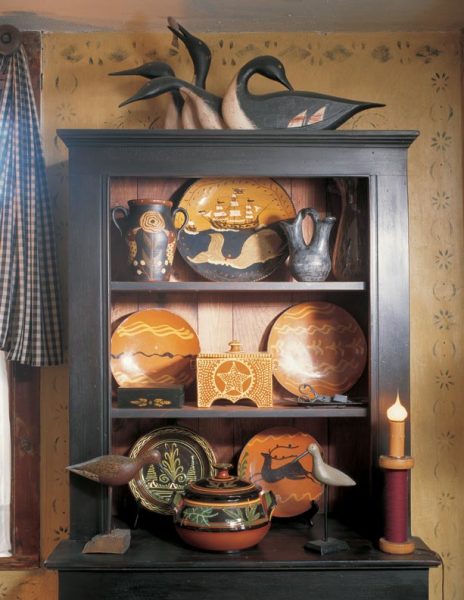
Against period stenciling, the cupboard is a well-made new piece.
Idea #2: Primitives by Context
Collections can blend in to make an old house look like a page from history—but they become objects of folk art in a modern room. Different collectors use old with old, old with new, and antiques with reproductions. We often rely on antiques to add “story” and patina to a new or renovated space.
Then again, an old room preserved may demand historical reproduction furniture. The line between antique and reproduction is seamless, for example, in the room at left, where collectibles are displayed in a newly made primitive cupboard against a historical backdrop of stenciled walls.
Idea #3: Primitives in Kitchens
Primitive collections help create a pleasing transition between restored rooms in an old house and a more contemporary kitchen. A run of cabinets can be made sympathetic by the use of period-inspired details and paint color—all the more so when an antique corner cabinet or a rustic cupboard finds its way into the room.
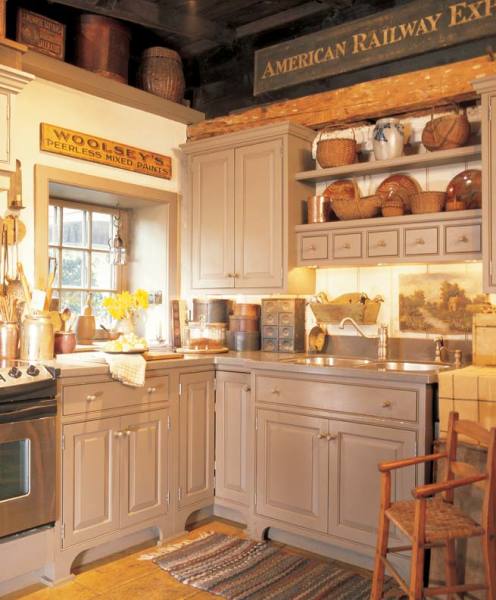
Primitive collectibles and wares backdate a sensitively designed new kitchen.
A modern-functioning but simple kitchen, at right, gets “personality” with the display of collectibles: redware, baskets, Shaker boxes, and crocks.



